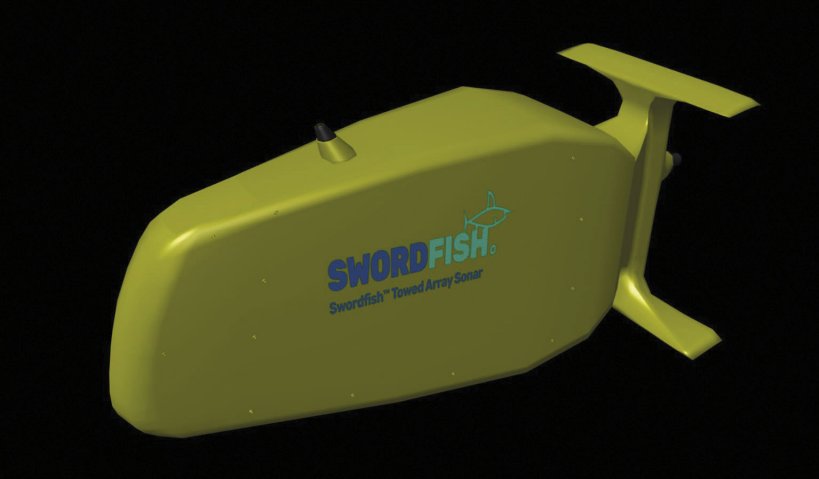
The towed body unit of the SwordFish towed array system. (DSIT)
Israeli company DSIT Solutions has received approval from its government to export the SwordFish towed array sonar system, and is showcasing the product outside the country for the first time.
The product is being showcased at the Pacific 2019 international maritime exposition, which runs from 7–10 October in Sydney. It is being marketed as a lightweight, low-frequency anti-submarine system that can be operated and monitored remotely from shore without too much intervention from personnel at sea.
“There has been an increase in submarines in recent years and we estimate that navies worldwide do not have sufficient number of frigates or large ships to perform anti-submarine operations,” said retired Commodore Hanan Marom, vice-president of business development and marketing at DSIT.
“Our proposition is for operators to free their frigates and larger ships for operations further out at sea and utilise smaller vessels, such as the offshore patrol vessels or smaller patrol craft, for anti-submarine patrols that are required closer to the littorals,” added Marom in an interview with Janes at Pacific 2019.
“Operations are co-ordinated from an onshore control station and personnel on the host vessel only need to winch in, or winch out the system from deck when commanded,” he said. The SwordFish is also equipped with machine learning algorithms and automated classifiers. As such, it reduces the number of sonar operators required for anti-submarine warfare (ASW) operations.
The SwordFish system comes in both passive and active modes and can be retrofitted on existing vessels that displace at least 400 tonnes with minimal or no modifications. On deck the system requires space and power supply for a single hydraulic winch system. All other system infrastructure, including operator consoles, is located onshore.
Looking to read the full article?
Gain unlimited access to Janes news and more...


